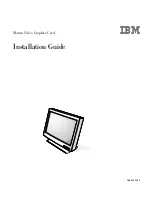
18
© Sealevel Systems, Inc. 7402 Manual | SL9063 7/2021
Why use an ISP?
The answer to the polling inefficiency was the Interrupt Status Port
(ISP). The ISP
is a read only 8-bit register
that sets a corresponding bit when an interrupt is pending. Port 1 interrupt line corresponds with Bit D0 of
the status port, Port 2 with D1 etc. The use of this port means that the software designer now only has to
poll a single port to determine if an interrupt is pending.
The ISP is at Base+7 on each
port (Example: Base = 280 Hex, Status Port = 287, 28F… etc.). The ULTRA
COMM+422.PCI will allow any one of the available locations to be read to obtain the value in the status
register. Both status ports on the ULTRA COMM+422.PCI are identical, so any one can be read.
Example: This indicates that Channel 2 has an interrupt pending.
Bit Position:
7
6
5
4
3
2
1
0
Value Read:
0
0
0
0
0
0
1
0
Connector Pin Assignments
RS-422/485 (DB-9 Male)
Signal
Name
Pin #
Mode
GND
Ground
5
TX +
Transmit Data Positive
4
Output
TX-
Transmit Data Negative
3
Output
RTS+
Request To Send Positive
6
Output
RTS-
Request To Send Negative
7
Output
RX+
Receive Data Positive
1
Input
RX-
Receive Data Negative
2
Input
CTS+
Clear To Send Positive
9
Input
CTS-
Clear To Send Negative
8
Input
DB-37 Connector Pin Assignments
Port #
1
2
3
4
GND
33
14
24
5
TX-
35
12
26
3
RTS-
17
30
8
21
TX+
34
13
25
4
RX-
36
11
27
2
CTS-
16
31
7
22
RTS+
18
29
9
20
RX+
37
10
28
1
CTS+
15
32
6
23









































